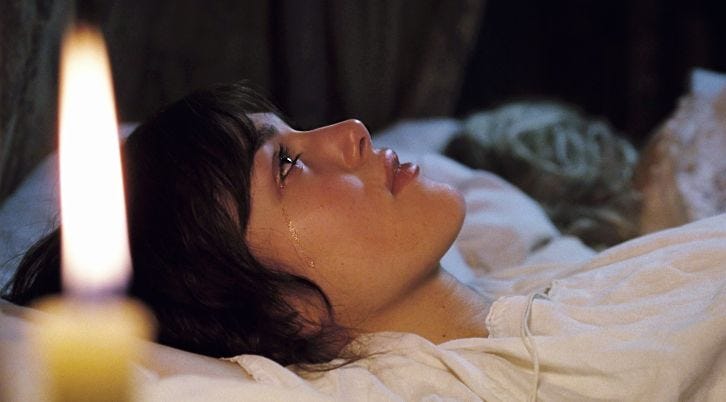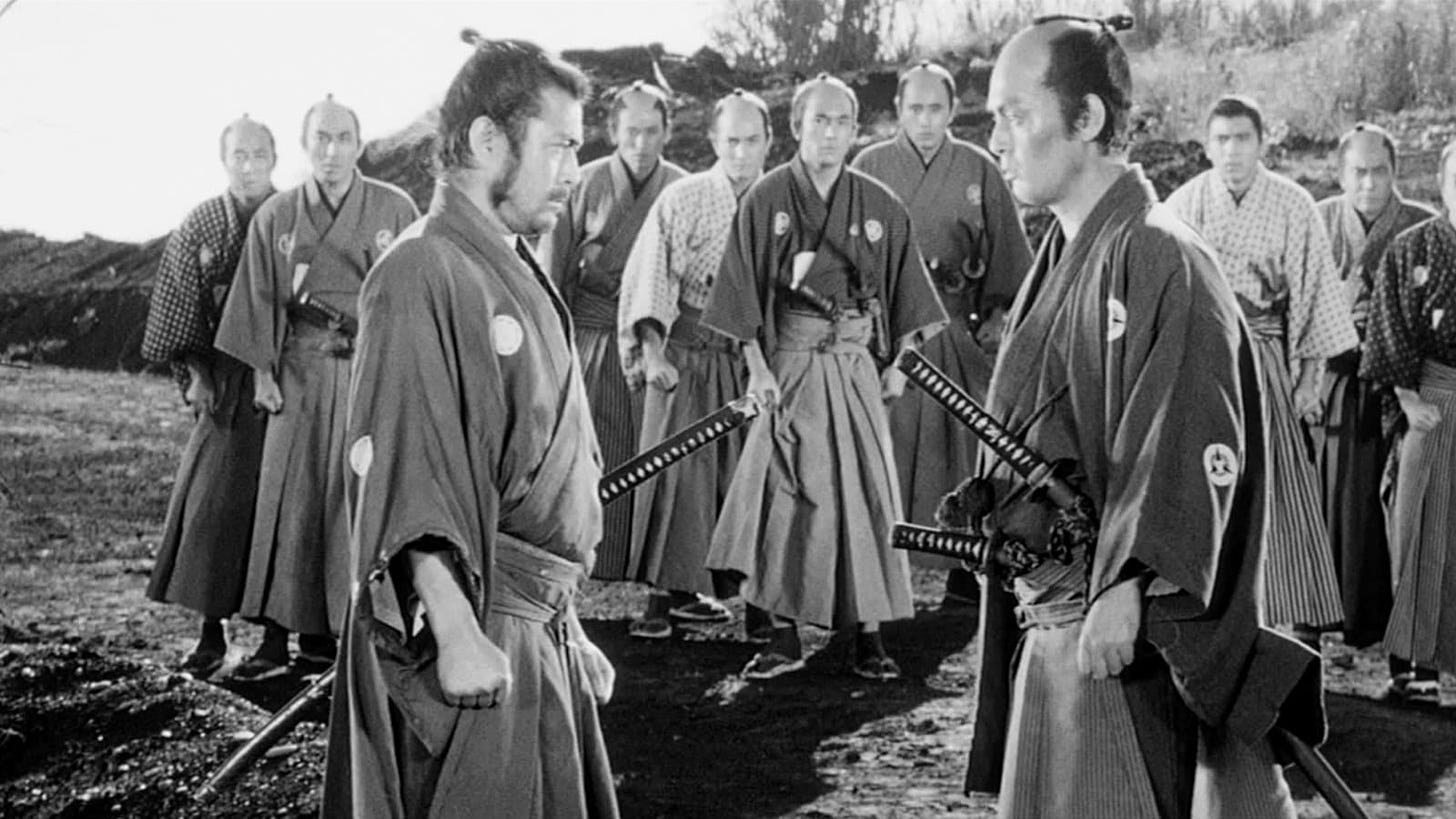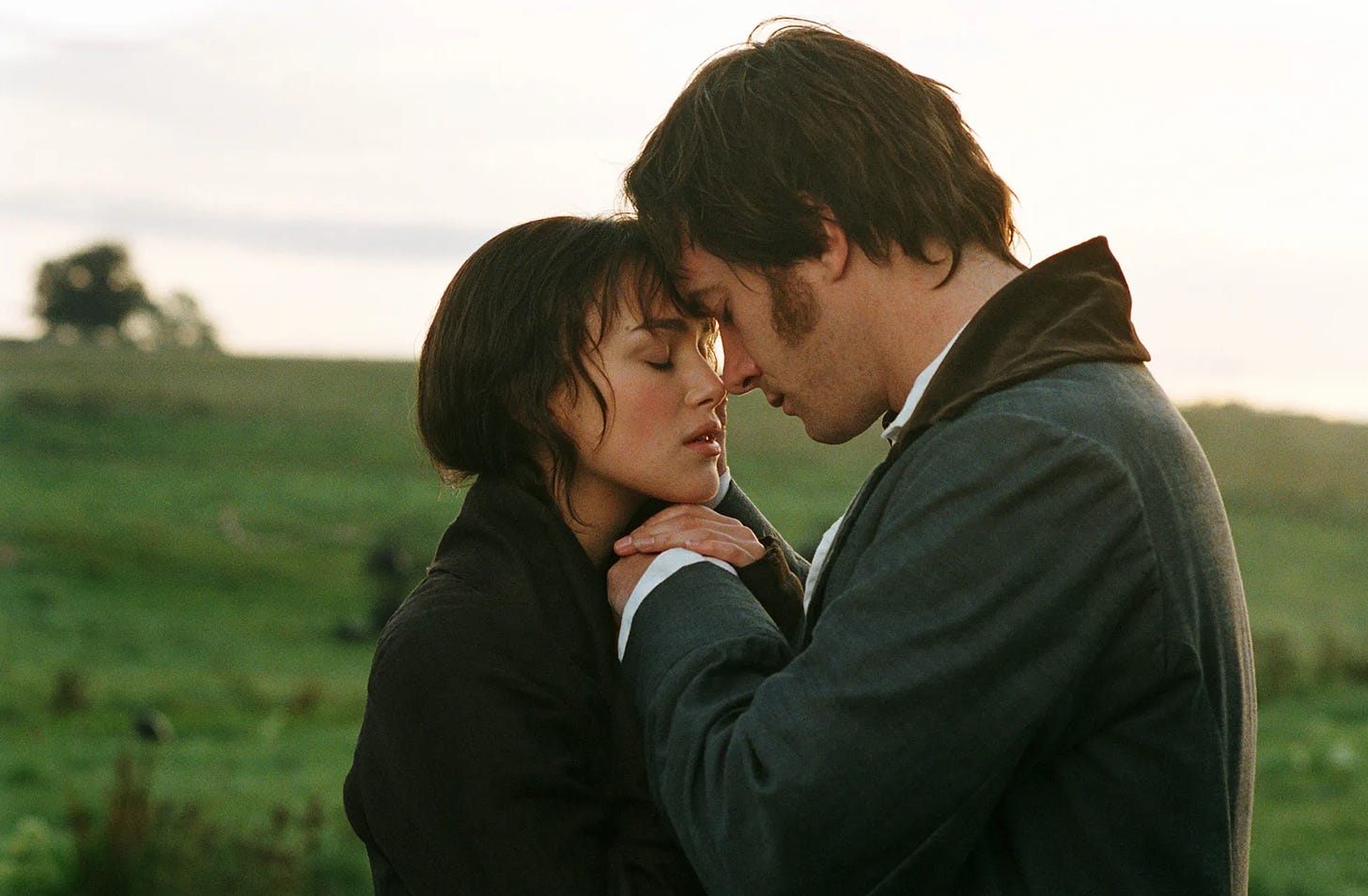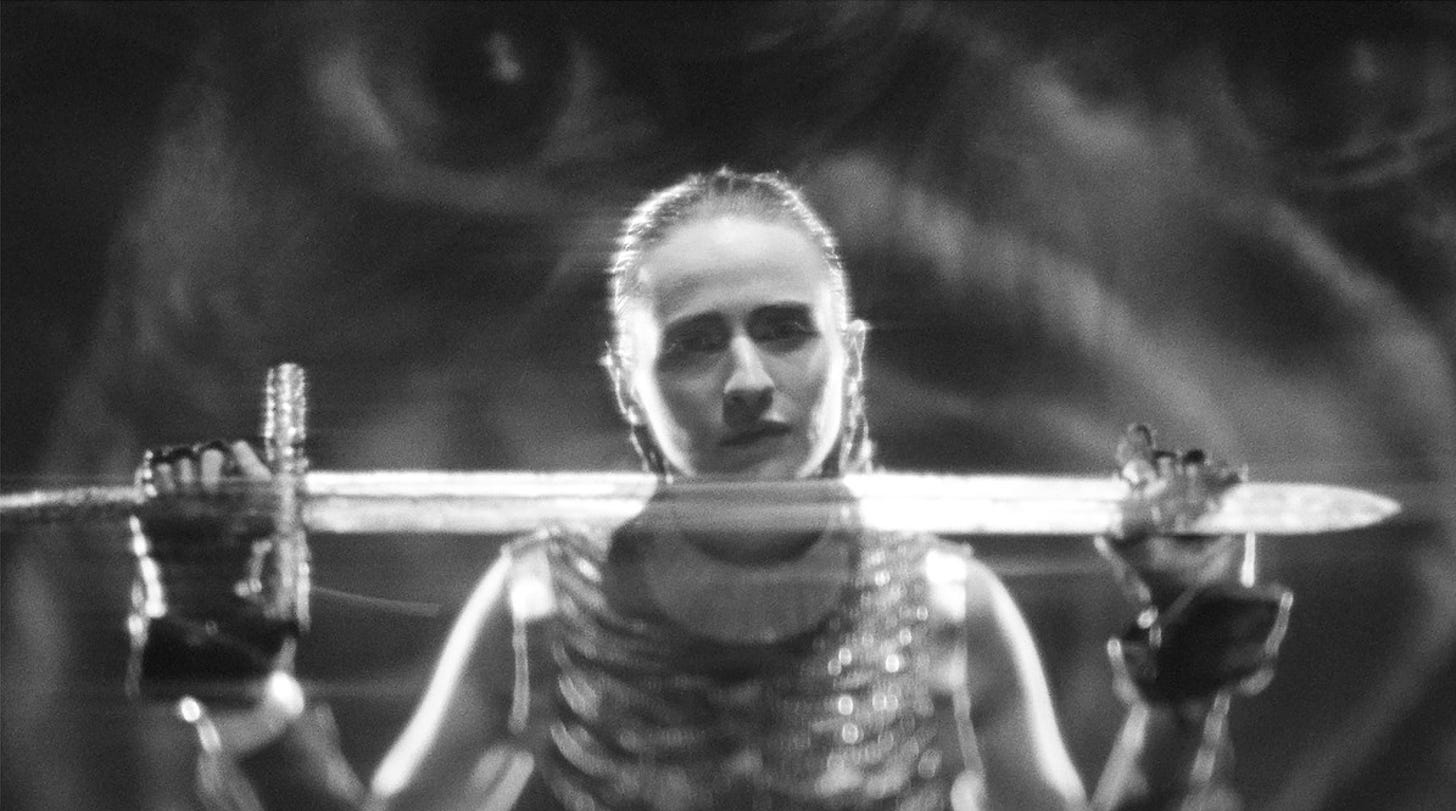[EDITED BY: GRIFFIN SHERIDAN & SPENCER EVERHART]
Hello and welcome back to an all-new installment of BEAM FROM THE BOOTH brought to you by GRAND RAPIDS FILM SOCIETY!
THANK YOU to the over 200 of you that came out to experience Hundreds of Beavers last night. Simply put: Holy sh*t. (Don’t forget to go back and re-experience Caleb’s foreword to the film from last issue with the full context!)
THIS SUNDAY (6/9), you’re invited to what will surely be a super-fun, super-memorable matinee screening of PRIDE AND PREJUDICE (Joe Wright, 2005). The film will start at 2:00pm, but arrive early to get in on some offerings from our partners for this event: Books & Mortar and Hyssop Floral. And, YES, costumes are highly encouraged. Lauren Patchett has a personal foreword to the film in this very issue! In fact, you’re about to read it, should you choose to continue on.
Also in this issue: a special preview of our SUMMER OF SEQUELS series, which starts later this month!
Go on, check it out...
PRIDE AND PREJUDICE: A COMFORT WATCH
[BY: LAUREN PATCHETT]
Growing up with separated parents, I had two homes. One of which was my dad’s house.
My father and I have always been alike, and as a kid his taste in movies influenced my taste in movies. This means that the most impactful movie of my childhood would be Raiders of the Lost Ark...followed by a handful of crime dramas.
I grew up around a lot of male influence and small town values. These are not inherently bad things, but I bring this up to highlight the fact that I didn’t have a lot of diversity in my life. I wouldn’t have thought to watch something like Pride & Prejudice on my own, and it surely wouldn’t have been recommended by those around me. I knew what a “period drama” was, but the feelings I saw directed towards them weren’t very nice. I thought that these movies were cheesy and, well, dramatic.
I didn’t actually even watch one until I was thirteen.
That was the year I found myself with a best friend named Aubrey. She and her family had moved across the country to my small town. To aid in their transition, they all moved into one house at first. So within one household, there was: Aubrey, her mother, her aunt, and her grandmother as well.
Before them, I didn’t have many female role models, so they left a lasting impression on me in many ways. Not only did they teach me how to curl my hair and apply eyeshadow, but (as you may have guessed) they showed me Pride & Prejudice.
My first viewing experience took place after weeks of telling Aubrey I wouldn’t watch it. Broken down by her insistence, these ladies and I crowded onto their couch, cuddled up with throw blankets, and equipped ourselves with snacks to watch the movie.
It was a completely new experience for me. In the movie, the wording was not too hard to understand, but the nuances within really snuck up on me. Aubrey and her family would yell out in frustration or ooo and aww at scenes. I was taking it in as best as I could, but it was as if I was skimming paragraphs. I didn’t understand their big reactions because I didn’t fully understand the plot.
What I did understand was the beauty of the landscapes and the visual details of the scenes. They took my breath away. The score sang out as well, helping me to understand the feelings behind the flowery language.
As the movie played on, things started clicking — partly because I was able to ask questions with Aubrey very happy to clear things up for me. Plus, it didn’t take much analysis to see the obvious chemistry play out between the main characters, seeing it through to the glorious and oh-so-satisfying ending.
I suppose you could say that the prejudice I believed was cool to feel towards this genre was shattered that day, though I don’t think I admitted then how much it truly stunned me. To see these women so enthralled with something too...and to find out how many times they had rewatched it! I didn’t have anything like that, but I wanted to.
Nowadays, when new renditions of period dramas come out, I’m quick to see them. I find so much to admire in these films. Often, the stories depicted are similar to those I see in the human experience of today: almost-universal things like the experience of young love, evolving family dynamics, and looking for one’s purpose in life. I also love to see strong-willed women working though the restrictions of society’s rules and expectations! Who doesn’t?
I have heard countless others offer praise to this movie, and I could list more of that here...but I think I will save it for the screening. Having yet to see it on the big screen, I'm excited to have the chance at Wealthy Theatre.
I anticipate that there will be a few first-time viewers, and I look forward to sharing the comfort that this film brings me with a broader audience.
See you there,
Lauren
INTRODUCING...
OUR SUMMER OF SEQUELS SERIES
The Grand Rapids Film Society is celebrating its second year, and what better way to mark the occasion than with a series showcasing the timeless trend of continuation?
GRFS is proud to present: SUMMER OF SEQUELS!
Join us these upcoming warmer months for a selection of fantastic follow-ups, some widely beloved and some lesser-known, as we honor the art of the cinematic return. Whether you'll be revisiting a classic or discovering a new favorite, you won't want to miss this special lineup of films — all on the big screen!
JUNE 24th — MAD MAX 2: THE ROAD WARRIOR
(George Miller, 1981)
After avenging the death of his wife and young son at the hands of a vicious gang leader, Max (Mel Gibson) drives the post-apocalyptic highways of the Australian outback, fending off attacks from nomadic tribes that prey on outsiders. Falling into an encampment led by the relatively peaceful Pappagallo (Mike Preston), Max at first schemes to steal their oil, but soon becomes the group's reluctant defender against the hulking Humungus (Kjell Nilsson) and his ruthless marauders.
When The Road Warrior landed in the USA in the spring of 1982, not many American viewers were aware that it was a sequel or that it's director George Miller was associated with something called the Australian New Wave. The film’s predecessor Mad Max had been released two years earlier and was moderately successful, especially given its low budget. But Mad Max didn’t come anywhere close to igniting the exhilarated response that The Road Warrior was met with when it blasted its way into the consciousness of audiences that discovered a new appetite for relentless full-throttle action that stripped away most semblances of a plot in order to focus almost exclusively on offering up perpetually escalating, adrenaline-charged bursts of cinematic aggression.
There had been plenty of great car chases and unique portrayals of humanity’s dystopian future in films that preceded The Road Warrior, but the lurid savagery of its post-apocalyptic milieu established a new standard that’s been often imitated — but never definitively surpassed. The epic pursuit sequence that runs over The Road Warrior’s final half-hour broke new ground in its visceral rawness and uninhibited commitment to fulfilling just about every craving a viewer might have for pyrotechnically fueled metal-crunching.
— David Blakeslee
JULY 1st — THE LOST WORLD: JURASSIC PARK
(Steven Spielberg, 1997)
John Hammond (Richard Attenborough) summons chaos theorist Ian Malcolm (Jeff Goldblum) to his home with some startling information — while nearly everything at his Jurassic Park had been destroyed, his engineers happened to have a second site where other dinosaurs were kept in hiding. It seems the dinosaurs on the second island are alive and well and even breeding...and Hammond wants Malcolm to observe and document the reptiles before Hammond's financiers can get to them.
Bigger, messier, and certainly much darker than its phenomenally successful predecessor, The Lost World remains arguably Steven Spielberg’s most divisive blockbuster (even the filmmaker himself has gone on record with his disdain for it).
Regardless, one cannot deny that bringing Jeff Goldblum back to be the protagonist this time around is the first stroke of genius here, and from our vantage point in 2024 the awesome spectacle on display hails from that ‘sweet spot’ time in Hollywood history where practical effects and CGI were being intermingled for fantastic results.
The film still stands as one of the most curious entries in the director’s career, especially among his ‘one for them’ entertainments. For a pop film artist who has been both embraced and ridiculed for sentimentality, childlike wonder, and properly liberal stagings of American history, there is a mean and even nasty-bordering-on-cruel streak that runs through this big-budget creature feature that is fascinating to witness. And despite the critiques some might levy against it, in typical Spielberg fashion, this sequel contains numerous terrific set pieces, including one — an astonishing plunge over a cliff by a massive trailer during a storm — that ranks with the very best action sequences in the filmmaker’s body of work.
Since its release, the debate has never been settled. Overblown disaster? Unfairly maligned masterpiece? Simply misunderstood? Decide for yourself on Monday, July 1st: it’s time for us all to revisit this one on the big screen!
— Spencer Everhart
JULY 15th — THE GODFATHER PART II
(Francis Ford Coppola, 1974)
The compelling sequel to The Godfather, contrasting the life of Corleone father and son. Traces the problems of Michael Corleone (Al Pacino) in 1958 and that of a young immigrant Vito Corleone (Robert De Niro) in 1917's Hell's Kitchen. Michael survives many misfortunes and Vito is introduced to a life of crime.
Not only is The Godfather Part II one of the best sequels of all time, it also happens to be both GRFS’s 50th film screening AND the film's 50th anniversary. How exciting! This is a celebration that you won’t want to miss.
I was first introduced to Coppola when I picked up a 3-on-1 horror DVD in a cheap bin at Walmart. The DVD included Night of the Living Dead (1968), Carnival of Souls (1962), and Coppola’s Dementia 13 (1963). At this time in life, I wasn’t familiar with Coppola, but Dementia 13 was the film that turned me onto his work. Shortly after, I was introduced to The Outsiders (1983), Apocalypse Now (1979), Rumble Fish (1983), Bram Stoker’s Dracula (1992), and — most importantly — The Godfather trilogy.
For many, cinema is an escape from the struggles and the mundane aspects of daily life. However, for me, I tend to take my escape a little further. Instead of escaping for a few hours in the theatre, that ‘escape’ tends to bleed into the outside world — especially when it comes to The Godfather. I feel and allow these characters to blend into my personality. Anytime I finish watching the series I find myself purchasing tailored suits and rings, drinking red wine, and sipping espresso, daydreaming about Italian culture. I find myself with a new sense of confidence and a new view of the world. I find myself hustling and trying to climb the ladder of success.
This speaks not only to the power of film but the power of The Godfather series. If you’re free on July 15th, I ask you to put on your finest suit, escape reality, and join us for our 50th screening as we celebrate the 50th anniversary of Francis Ford Coppola’s The Godfather Part II.
— Nicholas Hartman
JULY 29th — GREMLINS 2: THE NEW BATCH
(Joe Dante, 1990)
The magical collectibles store that Gizmo calls home has just been destroyed, and the tiny monster finds his way into a newly erected skyscraper. Billy Peltzer (Zach Galligan) and his bride-to-be, Kate (Phoebe Cates), who have previously dealt with Gremlins run amok, discover that Gizmo and an impish legion of reptilian pals are inhabiting the downtown building. The couple tries to stop the creatures from escaping into New York City, but this new batch of beasts might be uncontrollable.
Defending Charlie Chaplin’s heavily-criticized A King in New York (1957), legendary Italian director Roberto Rossellini called it “the film of a free man.” Freedom is a funny thing when it comes to cinema, particularly when considered within the industrial machinery of American moviemaking.
When Warner Bros. asked Joe Dante to make a sequel to his 1984 hit Gremlins, he refused until the studio couldn’t get the project off the ground elsewhere and offered him the now-unthinkable deal of complete creative control and a budget three times the size of the original film (this makes it, in some sense, the Citizen Kane of live-action cartoons). With these conditions, Dante went wild.
Everything in Gremlins 2: The New Batch is more: more hijinks, more jokes and visual gags, more sets, more references, and — naturally — many more gremlins. Not only did Dante envision the movie as an over-the-top sendup of sequels themselves, he also sought to parody much of pop culture at the time (including his own first Gremlins movie). Whereas that Spielberg-produced predecessor is a holiday horror flick fashioned into a (fairly violent) family film, the sequel pushes Dante’s cinematic imagination for madcap antics to new anarchic heights.
This is Hollywood satire at its most clever, fun, and fearless. Gremlins 2: The New Batch embraces its own absurdity, both as art and commerce, to test the limits of creative excess within the system and render it as mischievous and glorious as only Joe Dante can. It is — dare I say — the film of a free man.
— Spencer Everhart
AUGUST 19th — THE GOOD, THE BAD AND THE UGLY
(Sergio Leone, 1966)
In the Southwest during the Civil War, a mysterious stranger, Joe (Clint Eastwood), and a Mexican outlaw, Tuco (Eli Wallach), form an uneasy partnership. Joe turns in the bandit for reward money, then rescues him just as he is being hanged. When Joe's shot at the noose goes awry during one escapade, a furious Tuco tries to have him murdered. The men re-team abruptly, however, to beat out a sadistic criminal and the Union army and find $20,000 that a soldier has buried in the desert.
Though it’s duly recognized as the final installment in a trilogy focused on the “Man with No Name,” Sergio Leone’s The Good, the Bad and the Ugly functions perfectly fine as a standalone film, not requiring familiarity with either A Fistful of Dollars (1964) or For a Few Dollars More (1965) in order to appreciate the numerous admirable qualities that have earned it an overall rating of 8.8 on IMDb, placing it at #10 on that website’s all-time list.
For at least a few generations of movie watchers, whenever the words “spaghetti Western” are uttered, images instantly come to mind of the film’s tense showdown: Clint Eastwood, Eli Wallach, and Lee Van Cleef all gathered on a desolate dusty patch of ground, on track to dig up buried treasure but now ensnared in a classic Mexican stand-off. The tension is palpable between grimly squinting men, hands poised next to guns on their hips, sharply focused to detect the merest flinch from their adversary that justifies drawing their weapons and firing away. All the pressures leading up to that climactic moment have been impeccably established over the preceding 2 ¾ hours, a masterclass of character portrayals by the three leads, narrative development, screen compositions, editing, score, and production design.
This is one of the greatest Westerns ever made, but you do not need to be a fan of the genre to recognize why it rates so high. With its Civil War setting focused on themes of greed, cruelty, and the betrayal of makeshift alliances, The Good, the Bad and the Ugly provides a timeless commentary on issues at play across society and in our personal lives.
— David Blakeslee
AUGUST 26th - SANJURO
(Akira Kurosawa, 1962)
Toshiro Mifune swaggers and snarls to brilliant comic effect in Kurosawa's tightly-paced, beautifully composed Sanjuro. In this companion piece and sequel to Yojimbo, jaded samurai Sanjuro helps an idealistic group of young warriors weed out their clan's evil influences, and in the process turns their image of a proper samurai on its ear.
Like The Good, the Bad and the Ugly, Akira Kurosawa’s Sanjuro builds on another nameless character, this one portrayed by Toshiro Mifune in the film Yojimbo, released in 1961 to resounding commercial success in Japan (not to get too convoluted here but Mifune’s depiction in both films of a masterless samurai drifter had a direct bearing on the roles that Clint Eastwood took in his own trilogy, as A Fistful of Dollars is a nearly scene-for-scene remake of Yojimbo). Made as a sequel at the request of Toho Studio, Sanjuro serves as demonstrable proof that cranking out a quickie to followup an unexpected hit doesn't require a compromise of aesthetic values or elegant storytelling. Sanjuro was shot and released a mere eight months after Yojimbo, serving as a monument to Kurosawa's greatness for how adroitly he brought the project together — almost on a whim.
The story, set in Japan’s late Edo period (circa 1860) involves Mifune’s character (nicknamed “Sanjuro,” the Japanese word for camellia, a type of flowering tree) as he’s drawn into a sleazy morass of malice and corruption at the local magistrate level. Like its predecessor, Sanjuro balances comedic social commentary, virtuoso samurai performances, robust swordplay, and a concise but ample demonstration of Kurosawa’s directorial brilliance behind the camera. It also features Tatsuya Nakadai in a prominent supporting role as Sanjuro’s hitman rival that leads to an unforgettable sword fight which concludes the film. And if you didn’t already know: Mifune/Nakadai on-screen pairings are simply not to be missed!
— David Blakeslee
SEPTEMBER 9th — THE COLOR OF MONEY
(Martin Scorsese, 1986)
Former pool hustler “Fast Eddie” Felson (Paul Newman) decides he wants to return to the game by taking a pupil. He meets talented-but-green Vincent Lauria (Tom Cruise) and proposes a partnership. As they tour pool halls, Eddie teaches Vincent the tricks of scamming, but he eventually grows frustrated with Vincent's showboat antics, leading Eddie to take up playing again and inspiring his own comeback.
Martin Scorsese’s output following Raging Bull has been receiving a long-overdue reevaluation lately, with The King of Comedy (1982) and After Hours (1985) — both incredible films — garnering new fans and renewed appreciation that is putting to rest the idea that the 1980s were a rough period for the director before he unleashed Goodfellas (1990) at the turn of the following decade. At this point it has become obvious that The Color of Money, released in 1986, deserves the same love.
When measured in box office receipts, that old received wisdom about Scorsese’s 80s makes (cynical) sense. Scorsese himself admits to taking Paul Newman’s offer to helm The Color of Money — a sequel to pool hall drama The Hustler (1961) — in order to prove his commercial viability to studios after a string of financial disappointments. But make no mistake: this is not a hired-gun hack job or a shrugging attempt at conventional appeal. If this is a younger Marty’s idea of a piece of straightforward Hollywood entertainment, it’s one that he seemingly can’t help but suffuse with sublime style and a deep feeling for the characters and their world; never again will you doubt that milieus like competitive nine-ball and billiards gambling could be staged with such visual flair and intelligence.
This film is also the beginning of Tom Cruise as we would come to know him for the next twenty years, fresh off of Top Gun (1986) and fully transformed into a genuine Movie Star. He is paired with Newman who returns to his pool hustler role in an impossibly charismatic performance that won him his first Academy Award for Best Actor after decades of nominations.
Taken altogether, the movie is an absolute pleasure to behold. Numerous examples could be cited to this fact, but look no further than the stunning sequence where ace cinematographer Michael Ballhaus’ roving camera continuously circles around a pool table as a showboating Tom Cruise pockets every ball, one perfect shot at a time, while strutting around and singing along to Warren Zevon’s “Werewolves of London.” What do you expect? As with just about everything Scorsese, it’s pure cinema.
— Spencer Everhart
UPCOMING EVENTS
PRIDE AND PREJUDICE (Wright, 2004)
WHAT: In this adaptation of Jane Austen's beloved novel, the outspoken Elizabeth Bennet is introduced to the handsome and upper-class Mr. Darcy. Although there is obvious chemistry between the two, Darcy's overly reserved nature threatens the fledgling relationship. In partnership with Books & Mortar and Hyssop Floral. *COSTUMES ENCOURAGED*
WHEN: Sunday, June 9th, 2:00pm
WHERE: Wealthy Theatre
SHE IS CONANN (Mandico, 2024)
WHAT: MICHIGAN PREMIERE! Hellhound Rainer roams the abyss, following Conann in each phase of her life, from childhood as a slave to Sanja through to her accession as queen.
WHEN: Monday, June 17th, 8:00pm
WHERE: Wealthy Theatre
MAD MAX: THE ROAD WARRIOR (Miller, 1981)
WHAT: THE KICK-OFF TO OUR SUMMER OF SEQUELS SERIES! The first sequel in George Miller’s now legendary MAD MAX franchise finds Max driving the post-apocalyptic highways of the Australian outback, fending off attacks from nomadic tribes that prey on outsiders.
WHEN: Monday, June 24th, 8:00pm
WHERE: Wealthy Theatre
WHAT: Our returning program of curated short films from independent filmmakers with a MI connection!
WHEN: Wednesday, June 26th, 7:00 pm.
WHERE: The Wealthy Theatre
And so we’ve arrived at the end of another BEAM FROM THE BOOTH! We appreciate you taking the time to read it and truly hope you’ll continue to do so. Be sure to SUBSCRIBE to get each issue in your inbox every MONDAY (usually), and stay up-to-date on all things GRFS.
Plus, join us on social media! We’d love to chat with everyone and hear YOUR OWN thoughts on everything above (you can also hop in the comments section below).
Know someone you think will dig BEAM FROM THE BOOTH? Send them our way!
Look for ISSUE #61 in your inbox NEXT WEEK!
Until then, friends...





















